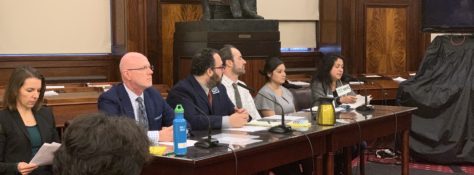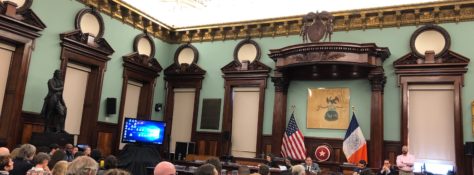News
At a City Council Environmental Protection Committee hearing last week, NYLCV testified in support of groundbreaking legislation that would make New York City the first in the world to set carbon emissions standards for buildings, which generate 70% of greenhouse gases in the City.
Learn MoreNews
The City Council’s Committee on Environmental Protection held a hearing last week on legislation that would set greenhouse gas emissions for buildings over 25,000 square feet.
Learn MoreNews
Congestion pricing can be much more than just a subway-fixing fund. It could also enable the electrification of the city’s entire bus fleet – a move that would save fuel costs, reduce the city’s carbon emissions and improve air quality for millions of New Yorkers that live, work and learn along the city’s maze of bus routes.
Learn MoreNews
Nature has always had a part in the world of art. Nowadays, art has become a method of spreading awareness of climate change through all senses rather than simply reading about its impact.
Learn MoreNews
The Delaware County Electric Cooperative (DCEC), SUNY Delhi and the New York Power Authority are planning a solar power generation system that will power the campus and the local community.
Learn MoreNews
Hydropower has been a staple of power production in New York for centuries. It generates electricity by capturing the energy of falling water. The School Street hydroelectric plant in Cohoes now generates 172 gigawatt hours per year and Cornell University also has its own hydropower plant.
Learn MoreNews
A process called holistic grazing can help combat global warming by pulling carbon out of the atmosphere into “sinks,” or giant carbon repositories. Farmers that use holistic grazing practices move grazing animals from one place to another for limited periods of time.
Learn MoreNews
In New York, Harmful Algal Blooms are rising at an alarming rate. One cause of HABs is agricultural runoff, which occurs when chemicals from fertilizer end up in our waterways. Some houses in rural New York neighborhood leach nitrogen into waterways because they are not connected to a public sewer system. Another cause of HABs is climate change.
Learn More

